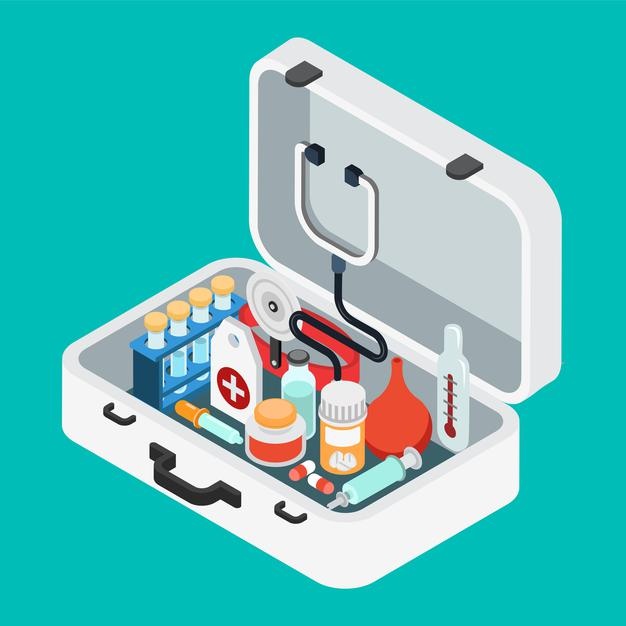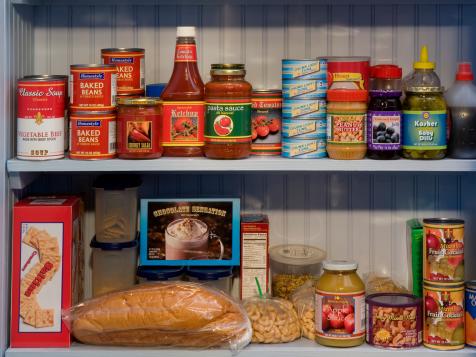8 Emergency Essentials For Your Home
Jan 04, 2022 11:45
Whether it's a fire, an earthquake, a hurricane, a family member becoming ill, losing electricity for several days, or anything else, an emergency is virtually always unexpected. We don't always know what to do, but it's a good idea to have the goods on hand in case you ever find yourself in an emergency circumstance.
1. First Aid Kits
In a disaster or emergency situation, injuries are a real possibility. To prepare, have materials on hand that can be used to treat minor injuries and prevent infection. Adhesive bandages and sterile pads, both in a variety of sizes, are essential components of a basic and functional first aid kit. Scissors, needles, and tweezers, as well as disinfectant, alcohol wipes, and latex gloves, are essential. Fever can be caused by infection or other illnesses; thus, a thermometer is a wise and required addition.

Bug spray and sunscreen should be included in the bag in case the emergency or disaster exposes the family to constant sunshine or biting insects. A spare supply of medication should be kept in the kit if a family member uses medications. Routinely replace all articles.
2. Circuit Breaker
Access to electricity has become an absolutely vital and pivotal aspect of maintaining and operating any modern commercial or industrial enterprise or even simply conducting day-to-day duties in a home. Despite this, electricity is inherently volatile; therefore, it must be carefully contained and prepared for, as well as possible hazards addressed.
A circuit breaker is a most popular and widely used device for electrical safety. A circuit breaker is an autonomous circuit protection system in its most basic form. Each circuit is connected to a single breaker, which is housed in an electrical panel (breaker box). The circuit will be monitored by the breaker, and if a problem arises, such as an overload, the circuit will be turned off instantly. There are many circuit breaker companies that manufacture the best circuit breakers.
3. Emergency Generators
In the event of a power outage, an electric generator might run furnace blowers, oil burners, and other appliances. The output of the generator determines how many appliances you can use. The homeowner should calculate the required wattage before purchasing a generator. To arrive at the total number of watts required during peak use, calculate the motor requirements at their beginning rate (far greater than the running rate).
Rewiring the house service entrance, installing a transfer switch, adding an alarm device or other accessories as needed, and maintaining the standby system would all incur additional expenditures. Typically, home generators are powered by connected gasoline or the gas-powered engine or a portable power source, such as a tractor.
4. Emergency Fuel Storage
Obtain and store enough fuel for your alternative heating system to last many days. Keep it in a secure, convenient location away from the house, such as a garage, carport, or shed. Do not use your emergency fuel for anything else, and keep an eye on the supply.
What services are available in your town for emergency assistance? There may be strategies in place for dealing with emergencies at the local level, at the school level, or at the county level. Contingency plans and supplies may be available through your local Red Cross or civic preparation authority.
5. Emergency Food Preparation
Providing hot meals for your family during an emergency could be a challenge. Cooking can be done on a camp stove or in a fireplace if necessary. To supplement dry stocks such as cereal, dried meats, bread, and cheeses, keep a supply of meal-in-a-can meals such as stews, beans, soups, canned meats, or spaghetti on hand. Freeze-dried meals for campers and trekkers are typically delicious and easy to make.

6. Sanitation
Sanitation will become a concern if your water supply is switched off. To prevent unintentional flushes, disconnect the chain or lever attached to the toilet handle and urge users to use covered receptacles for toilet paper. To avoid congestion, simply flush as needed. Purchasing a portable camper's toilet could be an alternative.
7. Lighting
Candles, matches, and at least one kerosene or gas lantern with plenty of fuel should all be on hand. A reliable flashlight with spare bulbs and batteries should be in your possession. If any of these materials are utilized in a non-emergency situation, they should be refilled as soon as possible.
8. Heat
When the power goes out, and you have to rough it, the smaller the room you have to heat, the easier it will be. The amount of emergency heat you have, the layout of your house, and the severity of the cold outside will all influence what you do. The rooms have been chosen for you if you will be using your fireplace or a stove that requires a chimney flue. If you are able to get some heat from your furnace, however, choose a location close to it to reduce heat loss that occurs in long pipe or duct runs.
Select a place on the warm side of the home away from prevailing cold breezes if you want to utilize portable heating equipment or have a choice among many heating zones. This area should have adequate insulation, as few windows as possible to reduce heat loss, and the ability to be segregated from unheated sections by closing doors or covering apertures to prevent drafts and heat loss. To limit heat loss even further, throw blankets or heavy curtains over windows.
If you're going to use your furnace in an emergency, be sure you know how to keep it from sending heat to places where it's not needed. This may entail blocking hot air ducts or turning off certain steam or hot water lines in addition to turning off the thermostat.
Conclusion
To protect the safety of your family, go over all of your plans and preparations. Actions taken in an emergency are worthless if they cause a new or larger crisis.
https://www.rospa.com/home-safety/advice/general/preventing-accidents-in-the-home
https://www.safehome.org/resources/emergency-prep-guide/







































































